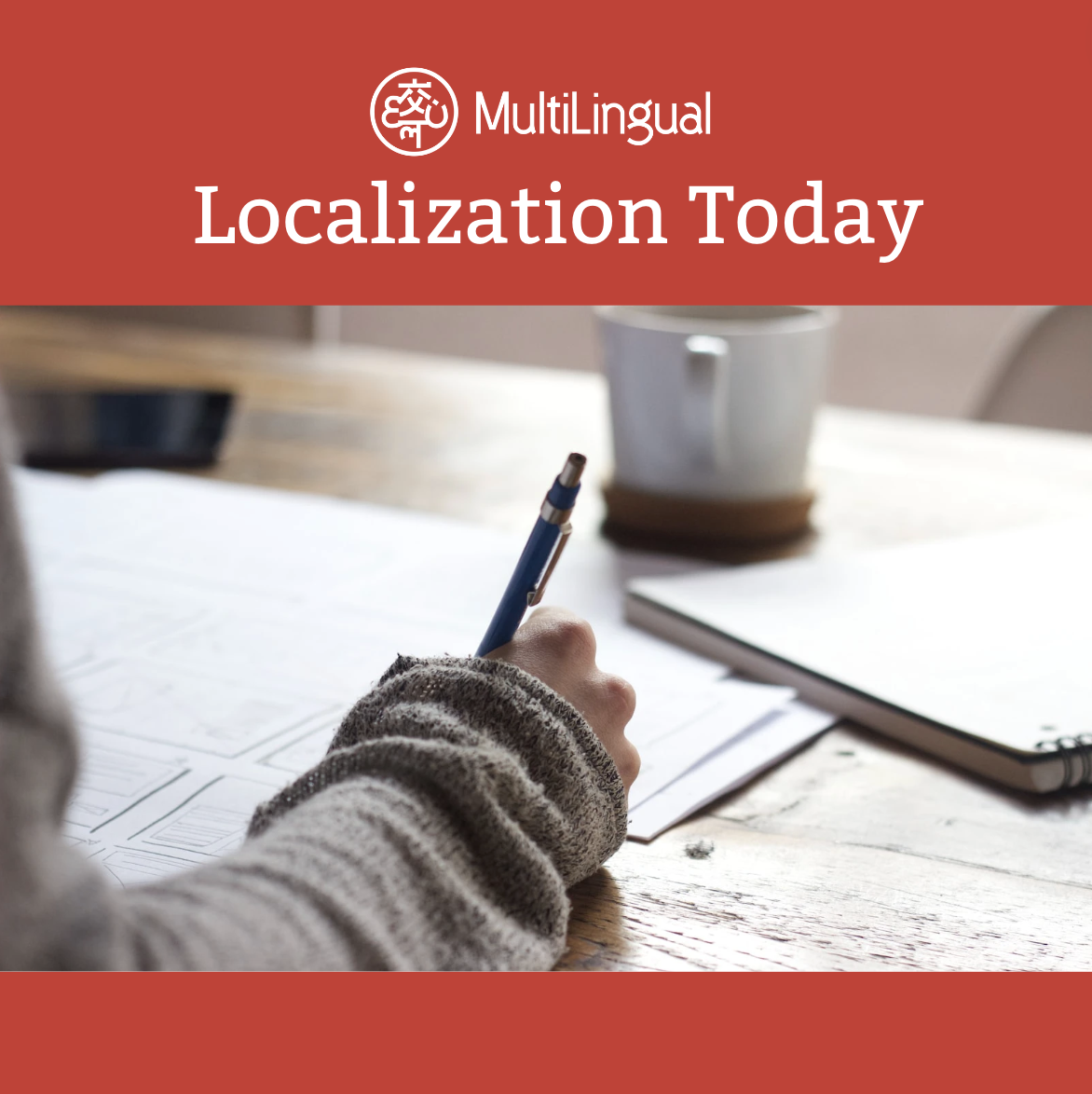Episode Transcript
[00:00:00] Risk Regulation and Managing the Rhythm of Change in Regulated Industries by Mimi Moore the old saying goes the only constant in life is change. From the evolving European medical device regulations and in vitro device regulations to new laws such as the European Union's EU's Deforestation Regulation, Accessibility act and Artificial Intelligence AI act, and the still developing US regulations on the export of biotech equipment. Managing constant change is just business as usual for regulated industries. Regulated industries are complex and carry a high degree of risk and compliance, so it makes sense that the companies in this sector are cautious when it comes to managing change.
[00:00:44] But is the perception that they are slow to change accurate? How do regulated companies, like medical device manufacturers, adapt to a constantly changing business environment?
[00:00:54] And in regard to language services, how are these companies able to manage change and remain compliant? Why Change Takes Time in Regulated Industries to learn more, I talked with three regulated industry localization veterans, each bringing a different perspective based on their experience and roles. There is one thing that they all agree the perception about regulated industries being slow to change is true, but with good reason. Implementing changes at the regulatory level simply requires a lot of people hours, because every new technology or regulation must undergo extensive regulatory scrutiny before it can be used, says Ulrike Walter Lippo, a freelance medical writer and Translator with over 30 years of regulated industry experience.
[00:01:40] The perceived slowness of the change is due more to these facts rather than some kind of resistance to change.
[00:01:46] Regulated industries also take a more measured approach to change because of the potential risk to life and limb, a kind of damage that goes beyond just brand reputation. Regulators are slow to change and the industry follows the regulators, says Karen Takotchik, director of sales for life sciences at VistaTec. Karen's background includes 20 years of localization industry experience and a PhD in chemistry from University of Cambridge.
[00:02:13] At the conferences I attended in 2024, I heard numerous requests for regulators to be more amenable to change.
[00:02:21] I think it's fair to say that many companies want to adopt new technologies and workflows, but they feel they are restricted by the regulators and the pace of change. Less than perfect medical device products are not an option for those who are ill, but at the same time, some regulations add very little value, as does a lack of uniformity. A key element that slows all medical evolution is a lack of a universal standard, says Kristen Murray Todd, a former localization manager and current manager for Medtronics, Global Service and Repair, technical Communication and training departments.
[00:02:56] Even within Europe and the countries that comply with the mdr, each country continues to have its own extra regulations that require extra submissions and reviews.
[00:03:05] This slows everyone down and is costly for what seems to be little added value for patient safety. Compliance teams shape the response to change Regulated industries manage change methodically to minimize risk and maintain trust with regulators, customers and stakeholders.
[00:03:23] Each company has compliance and regulatory teams who monitor regulations, review the approved requirements, assess the impact, and interpret what the law means for the company.
[00:03:33] Then they develop and provide training on what is needed to comply. These teams guide the company's internal changes, Karen says.
[00:03:42] They work with medical and technical writers and translation partners to ensure that content is written for the intended audience and is suitable for its purpose. Rules and Reality when regulations don't align, a regulation's impact can vary based on the product, especially the difference between the product's current state and the new requirement.
[00:04:01] In some cases, Kristen says, the product is already compliant, so it's simply a matter of producing the evidence for the relevant authority.
[00:04:10] In other cases, such as the implementation of the EU's restriction of hazardous substances requirement, significant changes may have been needed. If that wasn't possible, it meant the product could no longer be sold in that market.
[00:04:24] Some regulations are harder to implement than others, motivating some companies to seek reforms or get involved in the legislative process. It is well known from all the MDR implementation delays that this regulation has not been easy to navigate, Ulrike says.
[00:04:40] Companies are calling for amendments and sometimes getting active politically via associations or direct action to modify the legislation that affects them. Conflicting requirements in the regulations pose one of the biggest challenges for regulated industries.
[00:04:55] Green initiatives requiring less hard copy documentation and electronic delivery of labeling contradict the MDR requirement that each device have paper instructions for use. This leaves manufacturers and hospitals facing a violation of either not creating waste by using digital documentation or ensuring one paper document be included with every product, even if one shipment contains 1,000 products, Kristin says. I hope that regulations will become more aligned in the future to avoid these situations. Additionally, regulations could potentially drive medical device companies out of smaller markets or even all markets because of the cost of keeping the product and labeling current in all languages.
[00:05:38] We all know that there is much more to localization than translation, kristen says.
[00:05:43] Some departments choose lower cost translation options to keep their content current.
[00:05:48] But if you ask whether the rate includes edit, proof and customer review, or if the paperwork required for compliance was included, oftentimes the response is no small companies. Big challenges navigating compliance it makes sense that larger multinational companies may be slower to adapt to change. But are smaller companies or startups more nimble? Depending on the type of change they may be faster to respond because they are working on only one product or one technology.
[00:06:18] Smaller companies and startups also typically focus on a single market, usually in their home country, making initial clearance easier. Small companies often cannot afford to meet global compliance requirements, which impacts whether new technologies make it to smaller markets. From a localization perspective, small companies may find the cost of local language requirements higher than the profits to be made in that market, so they will choose not to expand.
[00:06:45] This is particularly true if the country also has a highly unique set of regulations and an expensive, time consuming submission and approval process. Testing and Development lead the Way Despite a desire to improve time to market, all departments in a medical device company march to the pace of the company's development and testing team. When it comes to a new product or significant change to an existing product, everyone depends on development and testing, kristin says.
[00:07:13] Marketing cannot promote a product that is not approved for sale and all claims about a product have to be backed up by evidence, which is often the result of testing and trials. Labeling is also considered part of a product, so it's required to follow the same development process as research and development.
[00:07:31] Because labeling is part of the regulatory submission, technical documentation teams have to wait for feedback from the regulators.
[00:07:39] This feedback often results in last minute changes which trickles down to linguists and language service providers LSPs as rush translation updates for a project that might have been completed months before. The Art of Change management Response to change is also prescribed by a company's ISO Standards and quality management system, QMS consisting of four quality Planning, quality control, quality, quality Assurance and quality improvement. A QMS contains business practices aimed at consistently meeting customer requirements and ensuring patient safety. A product's compliance with regulation is achieved via the company's QMS processes and work instructions, and these must be updated when any changes occur. In addition, employees must be trained on these changes, the product adapted if needed, and the changes documented. Change management is an important part of a company's qms, Karen says.
[00:08:35] Change shouldn't be made in one place without considering the knock on effects in other parts of a process.
[00:08:42] Opportunities and Obstacles the Impact of Generative AI, gen AI and Large Language Models LLMs is still taking shape for regulated industries because these organizations are not typically early adopters of technology as befitting their risk averse reputation. During 2024, many companies were discussing pilot projects and task forces, but I didn't see a great deal of implementation at scale, karen says.
[00:09:08] Consider two facts. We see the risk of hallucinations, false or misleading AI output in LLMs daily and we know that medical misinformation is common on the Internet.
[00:09:20] Therefore, any LLM being created, even any small language model, needs to have tight control on source content, which means significant investment.
[00:09:29] While AI could help accelerate some tasks, concerns about security and dependence remain. There is a shortage of experienced regulatory medical writers and I think some of the medical writing work could be accelerated with these tools, ulrike says.
[00:09:44] But there are still a lot of questions regarding potential pitfalls. From medical device and pharmaceutical companies to regulators, physicians and patients, AI is getting a lot of attention in regulated industry news stories and press releases. The impact of AI is going to be huge, but it needs to be implemented carefully, kristen says.
[00:10:06] Not only must the data feeding into these systems be checked, but the statements coming out must be carefully reviewed to ensure it is producing accurate evidence based information.
[00:10:16] The ripple effect Change touches every role One thing is clear. The impact of change on regulated industry companies depends on each person's role. For linguists, translation needs to change when new regulations appear or when they are modified.
[00:10:32] This can mean that new types of documents need to be translated or other types of translations come into play, such as accessibility, lay audiences and easy to read versions. I recommend linguists stay up to date with regulatory developments affecting their clients over, Ulrike says.
[00:10:49] Regulatory authorities can help by acknowledging that there are international markets and by providing multilingual documents like the EU does, as well as official dictionaries and guidelines. The impact of new or changing regulations for an LSP depends on whether the regulation relates to content. The MDR brings translation earlier in the process, which is helpful for LSP projects and helps drive business, Karen says.
[00:11:16] However, many regulatory changes are unrelated to language, so they may cause only minor copy updates or nothing at all. Every company Kristin has worked at, regulated or not, focuses on gaining efficiencies to get to market faster. But medical device companies need to balance this with ensuring that the product developed is safe and effective.
[00:11:36] This means creating a lot of internal documentation, performing multiple reviews, and ensuring all materials are audit ready. In the end, it's all worth it. I love working in the medical devices space knowing that in my small way I am helping restore health and save lives, kristin says.
[00:11:54] Everyone is focused on these goals and it's fascinating to work with people in the many different disciplines required to bring a medical device to market.
[00:12:03] We all understand that regulations are there to ensure products are safe and effective and that any claims made about the product are truthful and balanced. This article was written by Mimi Moore, the owner of Netherlands based Wolfson Haus, writing a content marketing agency for LSPs, language technology companies, and B2B technology companies.
[00:12:24] She has 25 years of experience in the localization industry and is Program Manager for Content and Social Media at Women in Localization.
[00:12:32] Originally published in Multilingual Magazine, Issue 238, March 2025.


